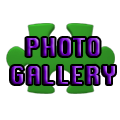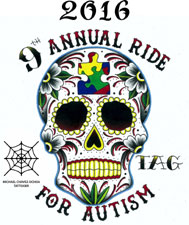What Causes Autism
Scientists aren’t certain about what causes ASD, but it’s likely that both genetics and environment play a role. Researchers have identified a number of genes associated with the disorder. Studies of people with ASD have found irregularities in several regions of the brain. Other studies suggest that people with ASD have abnormal levels of serotonin or other neurotransmitters in the brain. These abnormalities suggest that ASD could result from the disruption of normal brain development early in fetal development caused by defects in genes that control brain growth and that regulate how brain cells communicate with each other, possibly due to the influence of environmental factors on gene function. While these findings are intriguing, they are preliminary and require further study. The theory that parental practices are responsible for ASD has long been disproved.
What Role Does Inheritance Play?
Twin and family studies strongly suggest that some people have a genetic predisposition to autism. Identical twin studies show that if one twin is affected, there is up to a 90 percent chance the other twin will be affected. There are a number of studies in progress to determine the specific genetic factors associated with the development of ASD. In families with one child with ASD, the risk of having a second child with the disorder is approximately 5 percent, or one in 20. This is greater than the risk for the general population. Researchers are looking for clues about which genes contribute to this increased susceptibility. In some cases, parents and other relatives of a child with ASD show mild impairments in social and communicative skills or engage in repetitive behaviors. Evidence also suggests that some emotional disorders, such as bipolar disorder, occur more frequently than average in the families of people with ASD.Do Symptoms Of Autism Change Over Time?
For many children, symptoms improve with treatment and with age. Children whose language skills regress early in life—before the age of 3—appear to have a higher than normal risk of developing epilepsy or seizure-like brain activity. During adolescence, some children with an ASD may become depressed or experience behavioral problems, and their treatment may need some modification as they transition to adulthood. People with an ASD usually continue to need services and supports as they get older, but many are able to work successfully and live independently or within a supportive environment. How is autism treated? There is no cure for ASDs. Therapies and behavioral interventions are designed to remedy specific symptoms and can bring about substantial improvement. The ideal treatment plan coordinates therapies and interventions that meet the specific needs of individual children. Most health care professionals agree that the earlier the intervention, the better. Educational/behavioral interventions: Therapists use highly structured and intensive skill-oriented training sessions to help children develop social and language skills, such as Applied Behavioral Analysis. Family counseling for the parents and siblings of children with an ASD often helps families cope with the particular challenges of living with a child with an ASD. Medications: Doctors may prescribe medications for treatment of specific autism-related symptoms, such as anxiety, depression, or obsessive-compulsive disorder. Antipsychotic medications are used to treat severe behavioral problems. Seizures can be treated with one or more anticonvulsant drugs. Medication used to treat people with attention deficit disorder can be used effectively to help decrease impulsivity and hyperactivity. Other therapies: There are a number of controversial therapies or interventions available, but few, if any, are supported by scientific studies. Parents should use caution before adopting any unproven treatments. Although dietary interventions have been helpful in some children, parents should be careful that their child’s nutritional status is carefully followed.What Research Is Being Done?
In 1997, at the request of Congress, the National Institutes of Health (NIH) formed its Autism Coordinating Committee (NIH/ACC) to enhance the quality, pace and coordination of efforts at the NIH to find a cure for autism. The NIH/ACC involves the participation of seven NIH Institutes and Centers: the National Institute of Neurological Disorders and Stroke (NINDS), the Eunice Kennedy Shriver National Institute of Child Health and Human Development, the National Institute of Mental Health, the National Institute on Deafness and Other Communication Disorders, the National Institute of Environmental Health Sciences, the National Institute of Nursing Research, and the National Center on Complementary and Alternative Medicine. The NIH/ACC has been instrumental in the understanding of and advances in ASD research. The NIH/ACC also participates in the broader Federal Interagency Autism Coordinating Committee (IACC) that is composed of representatives from various component agencies of the U.S. Department of Health and Human Services, as well as the U.S. Department of Education and other government organizations. In fiscal years 2007 and 2008, NIH began funding the 11 Autism Centers of Excellence (ACE), coordinated by the NIH/ACC. The ACEs are investigating early brain development and functioning, social interactions in infants, rare genetic variants and mutations, associations between autism-related genes and physical traits, possible environmental risk factors and biomarkers, and a potential new medication treatment.Where Do I Get More Information?
Talk to Geoff or Samantha Cooper (209) 256-2476











